Continue reading for our analysis...
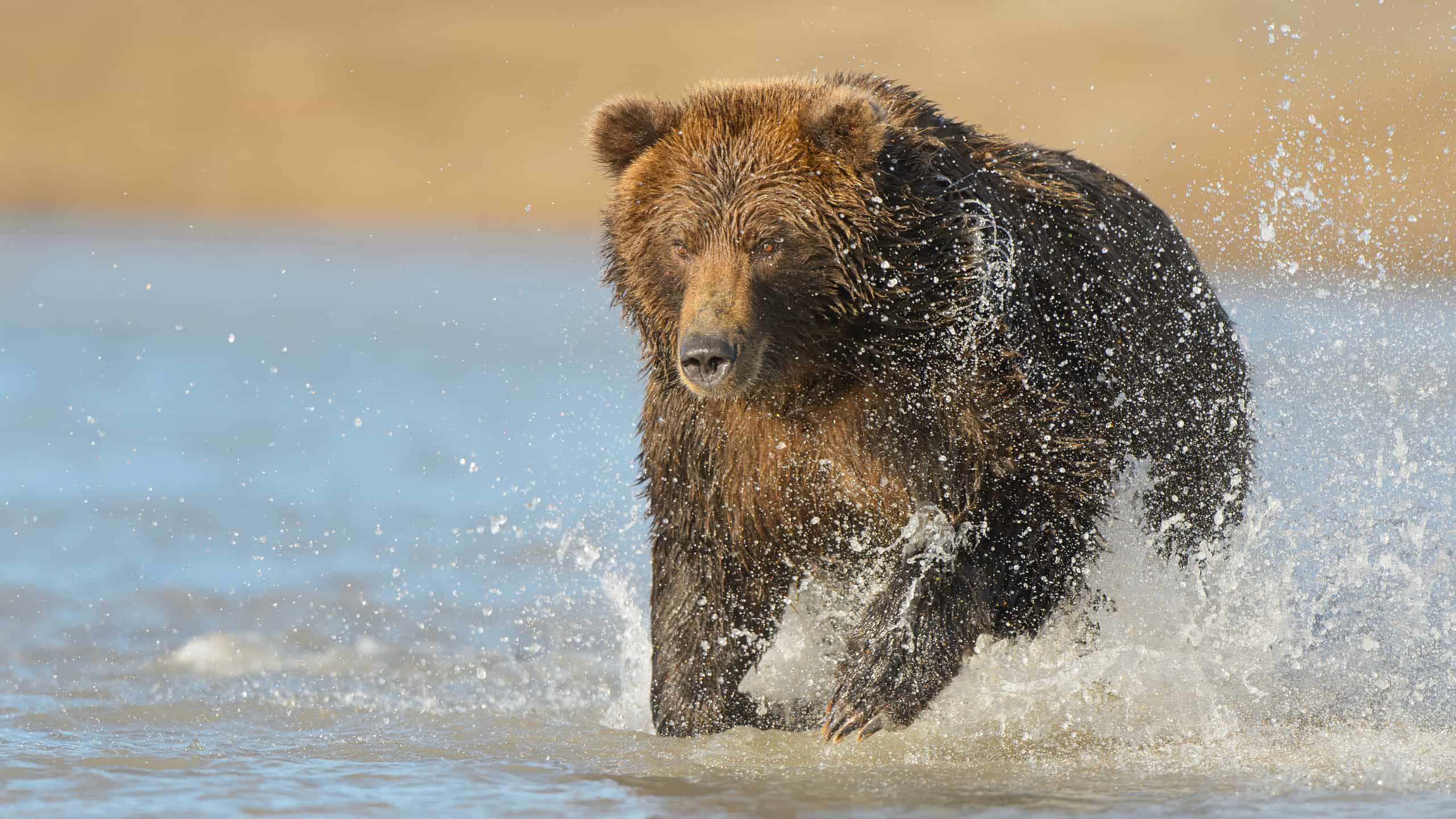
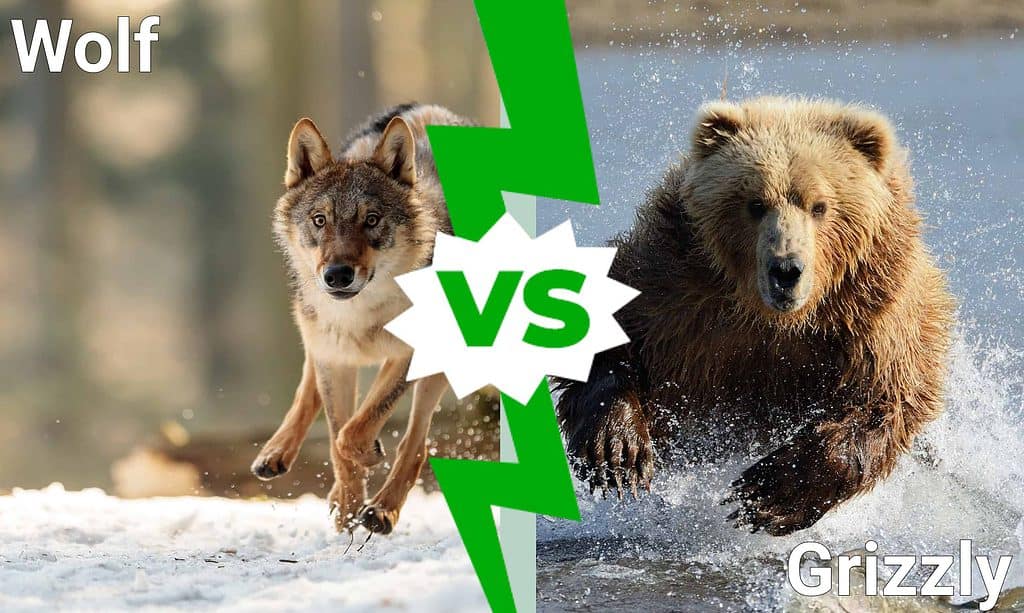
The first national park in Canada was created in 1885 and is known as Banff National Park. As a 26-square-kilometer (10 square miles) hot springs reserve at its inception, Banff has grown into a 6,641-square-kilometer (2,564 square miles) mountainous landscape that is tucked away in the heart of the majestic Canadian Rockies.
Millions of people flock to the park every year. Whether you’re looking for a breathtaking view, an unforgettable camping trip, or are on the lookout for wild animals, there’s something for everyone at Banff National Park.
In a video recently uploaded to YouTube, visitors spotted some activity in the rushing water during their visit. Most people fear getting anywhere near an apex predator. Unfortunately for a baby elk, there were two of these beasts chasing him down.
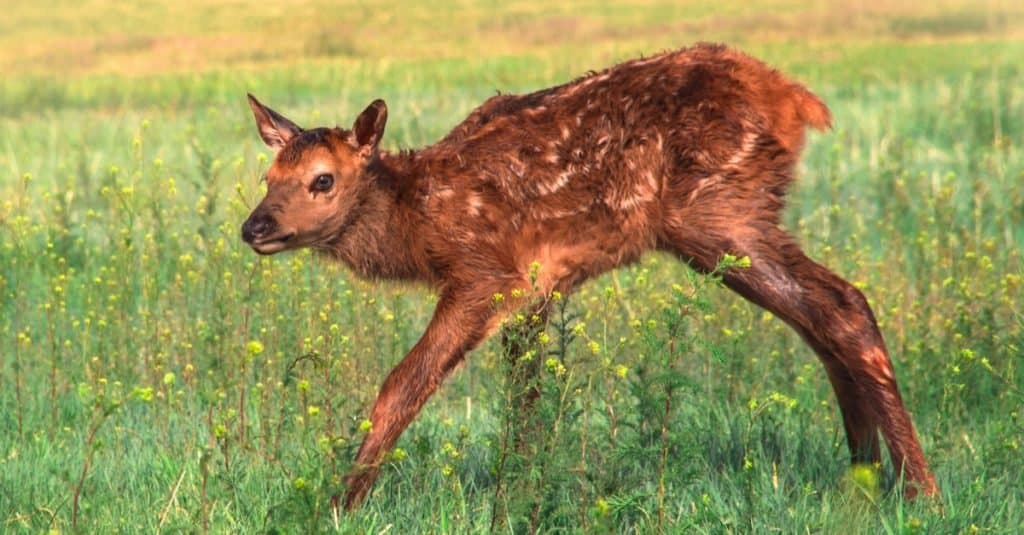
A baby elk calf is very vulnerable to many predators, including wolves and bears.
©Karlie Butler/Shutterstock.com
All caught on a camera, a wolf and a grizzly bear make an attempt to catch an unsuspecting elk near a river in the popular park. The video begins with a distressed elk calf running away toward a mountainside river after being mauled by a wolf. A nearby bear dives into the stream after the elk after hearing the unmistakable calls along the river.
The approximately two-and-a-half-minute chase occurred at Lake Louise in Banff National Park several years ago. The poor elk is swimming away from the grizzly bear and has gained a fair amount of separation when the video abruptly ends.
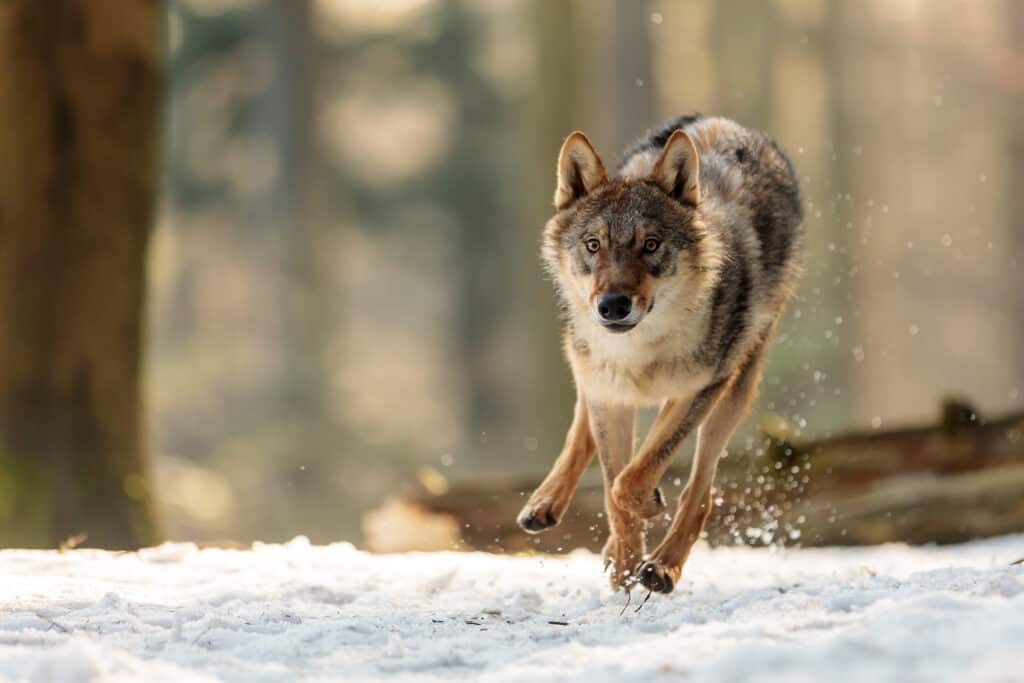
Wolves can reach speeds exceeding 48 kmh (30 mph).
©Michal Ninger/Shutterstock.com
A Quick Getaway
Nevertheless, the user claims that the wolf is waiting close by and the elk ends up on the coast. Ultimately, the grizzly bear finally caught up with them as well. The odds are definitely against the baby elk, even though it is unknown who will prevail.
A video watcher with keen eyes notices something about the footage. The person says, “The bear was right under them on their side of the river at the beginning of the vid. They are lucky. The bear is hunting for food for a reason. It will almost always go for the easiest source.” It’s safe to say that the crying elk may have saved the lives of these tourists.
Despite the fact that wolves will consume rabbits and other tiny prey, they prefer to hunt ungulates or large animals with hooves like deer and elk. Ungulate prey, primarily elk and bison, make up a sizable component of a grizzly bear’s diet as well. Grizzly bears consume ungulates mostly as carrion from wolves and winter kills, although they also prey on elk calves.
The majority of bear-wolf interactions, with the sole exception of interactions near remains and wolf dens, may be categorized as non-confrontational, with no injuries happening to either species involved. According to observations thus far, bears may actually be gaining from the existence of wolves by taking over wolf kills.
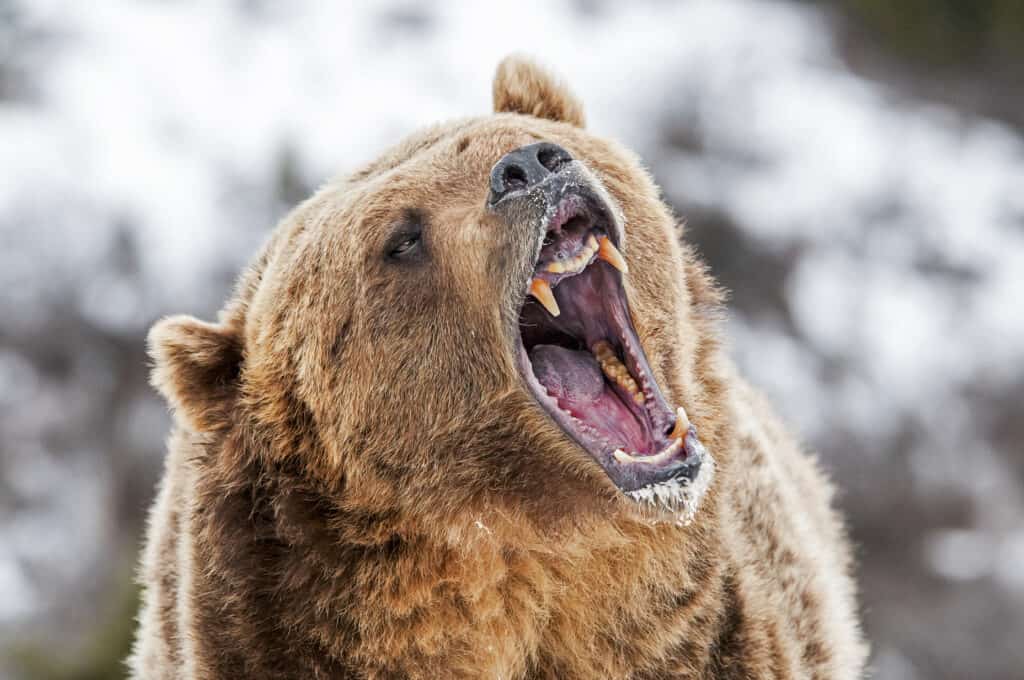
Grizzly bears consume ungulates primarily as carrion from wolves and winter kills.
©Scott E Read/Shutterstock.com
Is it Normal for Bears to Chase Baby Elk?
The simple answer here is, yes. Bears are opportunistic feeders, so they will prey upon baby elk if given the chance. Bears, especially grizzly bears, are known to be particularly effective predators of moose and elk calves from birth up until about two months of age. This type of hunting usually happens during the spring or rut season.
Bears will swim, chase, hunt, or otherwise charge their prey, which includes baby elk. If there is a chance that a bear can hunt down these types of animals, then they surely will do so. At four weeks, young elk are slower than adults, which is why they prey upon the young. Most bears won’t pursue adult elk because they are too fast.

A baby elk will not have the size, speed, or antlers of an adult male to help defend against predators.
©Agnieszka Bacal/Shutterstock.com
Thank you for reading! Have some feedback for us? Contact the AZ Animals editorial team.







